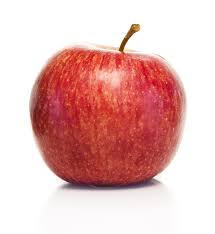

When you bite into an apple, you’re consuming a complex matrix of vitamins, minerals, and beneficial compounds. But here’s the surprising truth: two apples of the same variety, looking identical on your supermarket shelf, could have significantly different nutritional profiles. Research has demonstrated that vitamin C content in apples can vary significantly based on growing conditions and handling methods 1 2.
What Causes These Differences?
Several key factors influence the nutrient content of your produce:
1. Soil Quality
The foundation of nutrient-dense produce starts with the soil. Modern intensive farming practices have led to significant soil mineral depletion. A widely cited study examined nutritional data from 1950 to 1999, revealing significant declines in the mineral content of fruits and vegetables over this period 3.
2. Growing Conditions
Environmental factors play a crucial role:
- Temperature variations
- Rainfall amounts
- Sunlight exposure
- Local climate patterns
Each of these elements affects how plants develop and concentrate nutrients. Studies show that environmental stresses significantly impact the nutritional quality of crops, particularly their antioxidant content 4 5.
3. Harvest Timing
The moment of harvest significantly impacts nutrient levels. Research demonstrates that harvest timing and maturity can affect the nutritional quality of fresh produce, with some nutrients varying by as much as 30% based on harvest timing 6 7.
4. Storage and Transportation
Time is a critical factor:
- Vitamin C levels can decline significantly during storage 1 8.
- Folate content may decrease during transportation and storage .
- Temperature fluctuations during transport can accelerate nutrient loss .
The Real-World Impact
This variation in nutrient content has practical implications for consumers:
Health and Nutrition
When planning your diet based on standard nutritional tables, you might not be getting the nutrients you expect. Research highlights how food composition tables may not accurately reflect the actual nutrient content of produce due to these variations .
Economic Value
Are you getting what you pay for? Premium-priced produce doesn’t necessarily guarantee higher nutrient levels. Studies have found that cost doesn’t always correlate with nutrient density in fresh produce .
The Solution: Testing and Transparency
This is where food testing becomes crucial. Regular, systematic testing of produce can:
- Identify sources of truly nutrient-dense foods.
- Track seasonal variations in nutrient content.
- Compare different retailers and sources.
- Empower consumers to make informed choices.
What Can You Do?
- Source Thoughtfully: Consider local, seasonal produce where possible.
- Ask Questions: Engage with farmers and retailers about their growing practices.
- Stay Informed: Follow credible sources for food quality data.
- Support Testing Initiatives: Join communities working to increase food transparency. i.e. Join FoodTruthers
Looking Forward
Understanding nutrient density variations is just the beginning. As we gather more data through systematic testing, we can start making more informed choices about our food sources and push for higher standards in food production and transportation.
References:
- Anebi et al., “The Effect of Storage Conditions on Vitamin C Content in Apples” (2022)
- Dynamics of Ascorbic Acid Content in Apple (2020)
- Journal of the American College of Nutrition (2004)
- Średnicka-Tober et al., “Vitamin C Content in Fruits under Different Growing Conditions” (2020)
- Orange Pippin Trees, “Vitamin C Content of Apples” (2023)
- Postharvest Biology and Technology (2017)
- Appendix 1: Natural Variation in Vitamin C Levels (2021)
- Food Chemistry, “Nutrient Retention During Storage” (2019)
- Critical Reviews in Food Science and Nutrition (2018)
- International Journal of Food Properties (2020)
- American Journal of Clinical Nutrition (2015)
- Food Policy, “Price vs Nutritional Value” (2016)